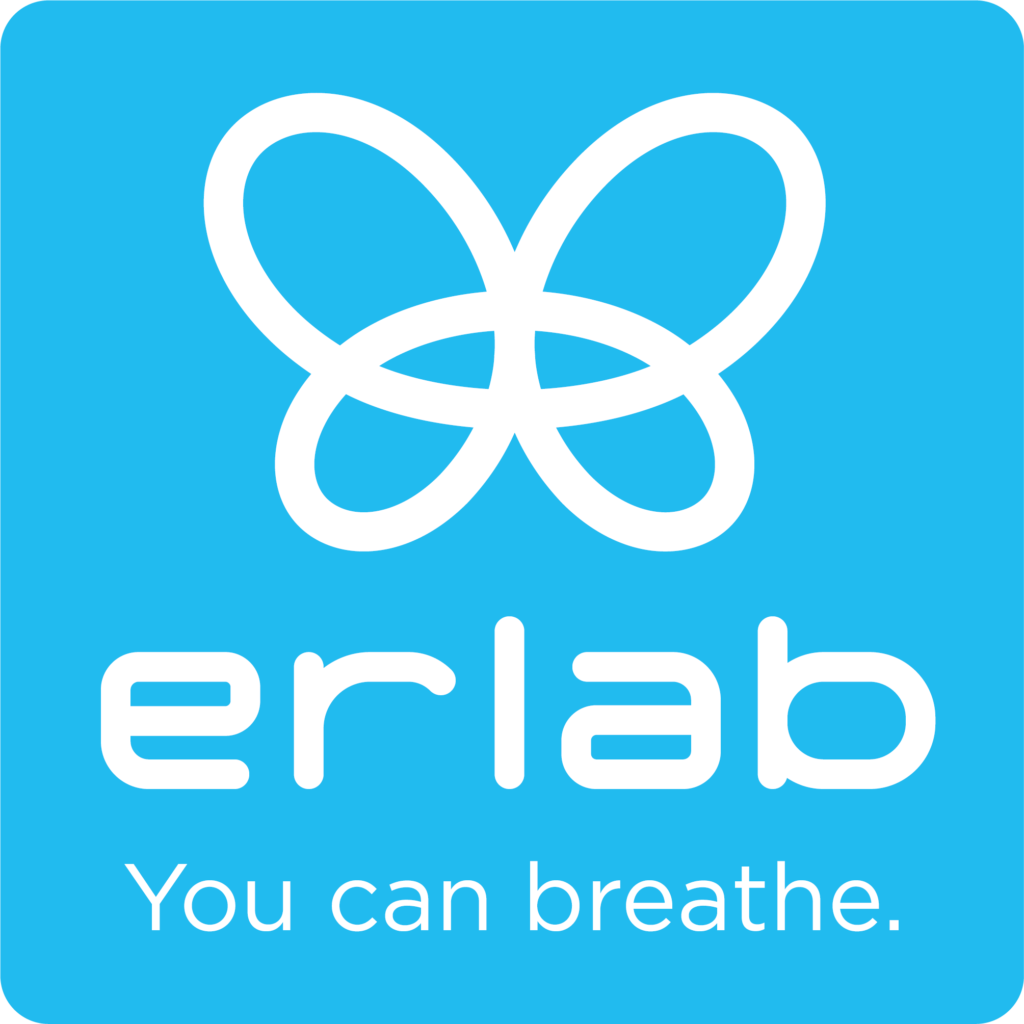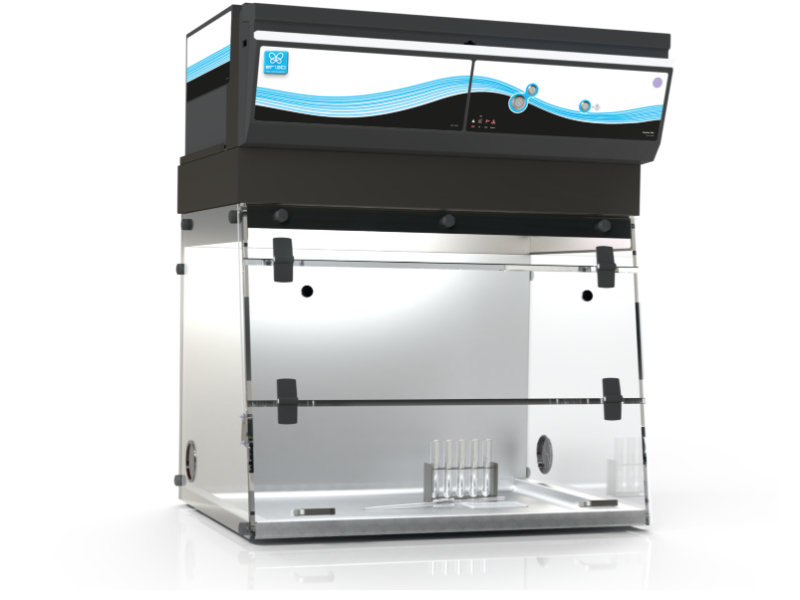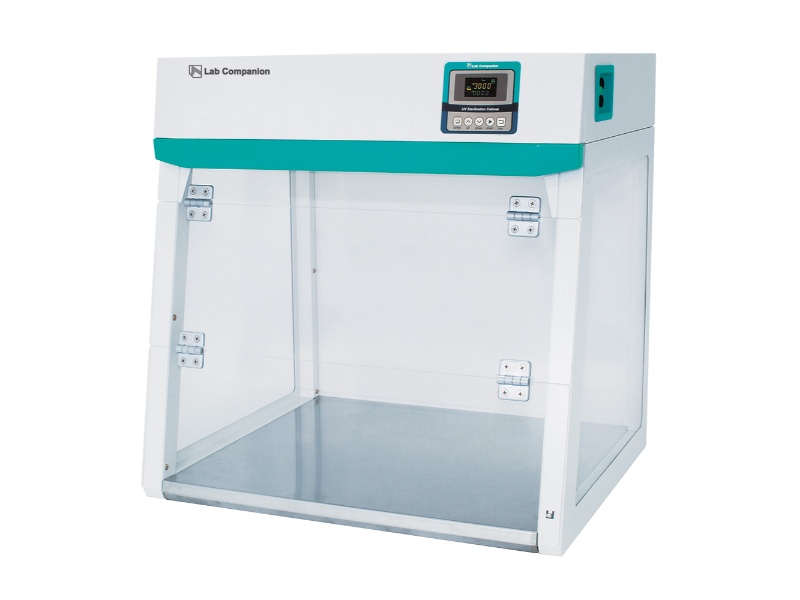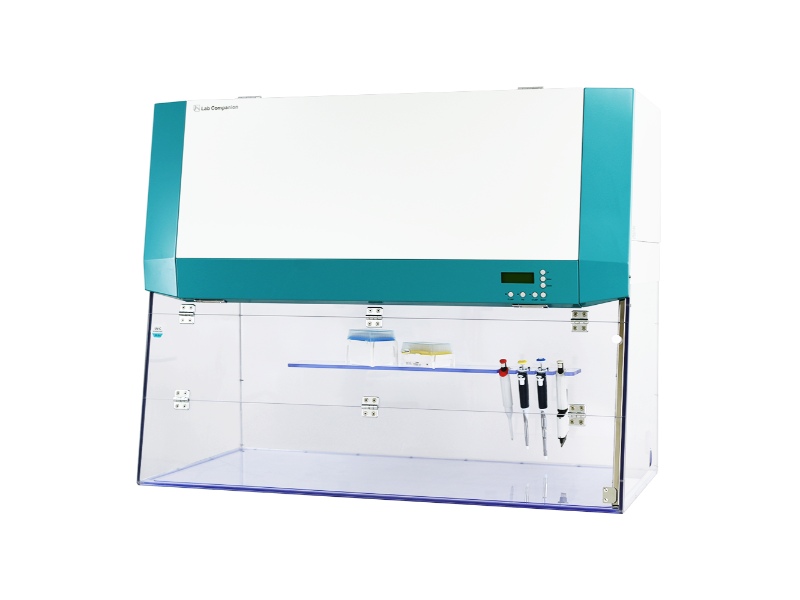Hottes PCR pour la protection de l'ADN/ARN
Labman Instruments est le distributeur officiel des hottes PCR Erlab Captair Bio et Jeio Tech pour la Belgique et Luxembourg.



Hottes pour PCR fiables pour une manipulation sans contamination
La préparation d’échantillons ADN ou ARN nécessite un environnement exempt de contamination. Nous proposons une gamme complète de hottes PCR conçues pour garantir une zone de travail stérile et sécurisée. En tant que distributeur officiel des marques Erlab Captair Bio et Jeiotech au Belgique et Luxembourg, nous mettons à votre disposition des hottes adaptées à toutes les configurations de laboratoire.
Nos hottes PCR conviennent parfaitement aux laboratoires de recherche, de diagnostic et d’analyse clinique, à la recherche d’un poste de travail ergonomique et sécurisé pour les applications PCR.
Hottes PCR Erlab Captair Bio Smart
Les hottes Captair Bio combinent technologie intelligente, filtration haute performance et design compact. Conçues pour les applications de biologie moléculaire, elles assurent une protection efficace de vos échantillons.
Caractéristiques principales :
-
Filtration ULPA U16 ou HEPA H14 pour une protection maximale contre les contaminants
-
Décontamination UV à 254 nm intégrée
-
Surveillance connectée via l’application eGuard
-
Design ergonomique avec façade inclinée et fonctionnement silencieux (< 57 dBA)

- Boîte à air mort PCR
- Largeur intérieure : 765 mm
- Pas de filtration
- Conception simple
- UV : irradiation germicide de 254 nm
€3.779,00 hors TVA

- Armoire PCR
- Largeur interne : 765 mm
- Filtre principal : Filtre HEPA : H14 ou U16 conforme à la norme EN 1822
- Pré-filtre : G3
- UV : irradiation germicide de 254 nm
€6.547,00 hors TVA

- Armoire PCR
- Largeur interne : 969 mm
- Filtre principal : Filtre HEPA : H14 ou U16 conforme à la norme EN 1822
- Pré-filtre : G3
- UV : irradiation germicide de 254 nm
€6.950,00 hors TVA
Jeiotech Série UVC – Hottes PCR à stérilisation UV
Pour les laboratoires recherchant une solution simple, fiable et économique.
Modèles : UVC-01, UVC-11, UVC-21
-
Lampe UV (254 nm) avec arrêt automatique pour sécurité
-
Panneaux en polycarbonate bloquant 99,9 % des UV
-
Surface de travail en acier inoxydable
-
Format compact idéal pour petits espaces

- Type : Hotte PCR UV
- Densité UV : 300 ± 10 % μW/cm²
- Surface de travail : Acier inoxydable
- Minuterie UV : numérique, jusqu’à 59:59 min
- Taille : Modèle compact de paillasse
€1.800,00 hors TVA

- Type : Hotte PCR UV
- Densité UV : 350 ± 10 % μW/cm²
- Surface de travail : Acier inoxydable
- Minuterie UV : numérique, jusqu’à 59:59 min
- Taille : Modèle de table moyen
€2.160,00 hors TVA

- Type : Hotte PCR UV
- Densité UV : 450 ± 10 % μW/cm²
- Surface de travail : Acier inoxydable
- Minuterie UV : numérique, jusqu’à 59:59 min
- Taille : Grand modèle de table
€2.400,00 hors TVA
Jeiotech Série PW – Hottes PCR à flux laminaire vertical
Pour un environnement de travail ISO Classe 4 avec protection active par flux laminaire vertical HEPA.
Modèles : PW-01, PW-11, PW-21
-
Débit d’air laminaire vertical 0,4 m/s avec filtration HEPA H14
-
Éclairage UV et fluorescent intégré
-
Faible niveau sonore (< 60 dBA)
-
Disponibles en plusieurs tailles

- Type : Hotte PCR à flux laminaire
- Flux d’air : Vertical, 0,4 m/s (78,7 fpm)
- Filtration : HEPA 99,99 % à 0,3 μm
- Lampe UV : 15 W pour la stérilisation
- Taille : Unité compacte de paillasse
€4.280,00 hors TVA

- Type : Hotte PCR à flux laminaire
- Flux d’air : Vertical, 0,4 m/s (78,7 fpm)
- Filtration : HEPA 99,99 % à 0,3 μm
- Lampe UV : 20 W pour la stérilisation
- Taille : Unité de table moyenne
€4.960,00 hors TVA

- Type : Hotte PCR à flux laminaire
- Flux d’air : Vertical, 0,4 m/s (78,7 fpm)
- Filtration : HEPA 99,99 % à 0,3 μm
- Lampe UV : 30 W pour la stérilisation
- Taille : Grande unité de paillasse
€5.400,00 hors TVA
Questions fréquemment posées
À quoi sert une Hotte PCR ?
Une hotte PCR est utilisée pour protéger les échantillons d’ADN et d’ARN de la contamination aérienne pendant la préparation de la réaction en chaîne de la polymérase (PCR). Elle offre un environnement de travail stérile et exempt de particules grâce à un flux d’air laminaire vertical et à une filtration HEPA.
Entre deux cycles de PCR, la lumière UV peut facilement être activée pour inactiver les copies d’ADN ou d’ARN du cycle précédent.

Pourquoi une hotte PCR est-elle importante pour obtenir des résultats PCR précis ?
Les hottes PCR empêchent la contamination croisée entre les échantillons, un facteur essentiel pour garantir des résultats précis et reproductibles. Elles minimisent le risque de faux positifs ou d’amplification dégradée en maintenant une qualité d’air de classe ISO 5 autour de l’espace de travail. Les faux positifs peuvent être causés par des souches issues d’un cycle PCR précédent, des micro-organismes en suspension dans l’air ou de l’ADN libre.
Quelle est la différence entre une hotte PCR et une poste de sécurité microbiologique ?
Une hotte PCR protège l’échantillon de la contamination mais ne protège pas l’utilisateur ou l’environnement des risques biologiques. En revanche, une poste de sécurité microbiologique protège l’utilisateur et l’environnement des matières infectieuses, en plus de protéger les échantillons. En outre, les postes de sécurité microbiologique sont généralement moins optimisées pour la décontamination par UV.
Comment fonctionne la décontamination par UV dans une hotte PCR ?
La décontamination UV utilise la lumière ultraviolette (généralement UV-C) pour décomposer et désactiver les molécules d’ADN sur les surfaces à l’intérieur de l’enceinte. Cela réduit le risque de contamination entre les cycles de PCR, améliorant ainsi la fiabilité et l’intégrité de l’échantillon.
Vous ne savez pas quel appareil vous convient le mieux ? Contactez-nous pour une consultation gratuite et obtenez la configuration la plus optimale pour vos besoins de laboratoire.
- info@labman.be
- + 32 478 90 51 93
- Belgium, Luxembourg and Netherlands
